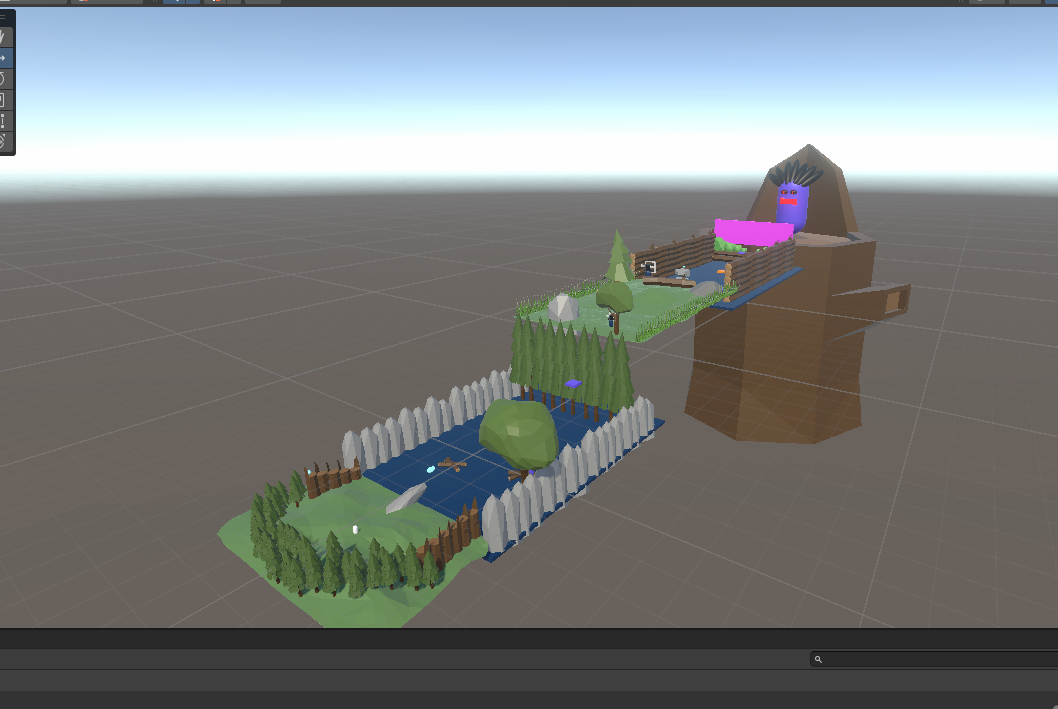12/15/2024
Sprint 5 Review
Hello everyone and welcome back to my last and final blog post for this semester's 370 digital prototype. Our last sprint has officially finished and today I will be wrapping up our final news that I have for you guys as well as updating you on how our final prototype playtest went and how it turned out.
Work Completed
Starting off I will talk about the work I focused on for our 5th and final sprint we had left. With that being said, my team and I devoted this sprint to making sure we had enough time to work out any last-minute technical issues and also add any last and final features we could fit in. While we definitely did our best to add some finishing touches, we made sure to leave enough time to not only do some bug testing but to also make sure our final prototype build would work on any working pc. This was especially important because we wanted to make sure our final iteration of our digital prototype would run nice and smoothly, so that when we would run it on our last in class day for playtesting it would work efficiently. We definitely worked hard to make sure of that.
As for the actual work I did, it honestly came down to a lot of final touches or small little improvements based on our last playtest we had. One major thing that needed to be reworked was perhaps my moving platforms from last time. During our last playtest I figured out from watching our play testers play our prototype that there was actually a small issue with the moving platforms. Essentially, whenever the player character would jump onto a moving platform, they would not move with it and instead the platform would leave the player behind. When watching this, I noticed that players would get disappointed or frustrated that the moving platforms did not work correctly, so I knew I had to fix this as soon as possible. What it basically came down to was that there was no collision event being detected from the player, so I opened my moving platform script and was able to make that collision detection happen. Since I created 3 different moving platforms, naturally when I was able to fix it for one platform, I fixed it for all of them.
Another thing that I worked on improving from last time was perhaps the enemy prefabs to better reflect that they are actually enemies. Last time during our playtest we had a number of play testers who got confused and actually thought that the enemy prefabs were actually health power ups. The confusion started when play testers saw that the enemies had a health UI above them and seemed to appear like normal power up pickups. Knowing this I did a small update on the enemy prefabs to better reflect their appearance so that future play testers could know these mean danger.
The last but not least thing I worked on this sprint was to create a final boss battle stage or level that would need to be transitioned into only after the player has defeated or passed all other levels first. This stage or level would serve as a final boss battle for our player to know that they have entered the final stage of our game and they need to pass this in order to finish our game. Naturally when I was designing this final stage I wanted it to have the ambiance of a forest or lost woods environment, so I was able to find these amazing free assets inside of the Unity Asset Store:credit to JustCreate and their Low-Poly Simple Nature Pack | 3D Landscapes | Unity Asset Store. After downloading and importing these assets into our project folder, it was as simple as making sure they had all their colliders turned on as well as their proper materials assigned inside of unity and then me and my team could use them to create an awesome environment that would tie to our games genre.
After all these final updates were complete it was time to create our digital prototypes last and final build in order to have it ready for our last day in class playtest.
Overall
During our project, several things went well, starting with our ability to work cohesively as a group without encountering any major issues. The division of tasks was handled efficiently, thanks to our backlog and the guidance of our Team Producer. As a result, we were able to take our project from a simple paper prototype to a fully functioning digital version with minimal changes to the original game concept. However, there were also challenges we faced. Time management was a significant hurdle—while we managed to deliver a working prototype, there were moments when we could have spent more time refining certain aspects of the project. Communication was another area where we struggled; there were times when it was difficult to coordinate team meetings to address important issues. Additionally, we didn’t give enough attention to our main game mechanic the player's teleport function which should have been a stronger focus. Looking ahead, we recognize that improving communication and being more disciplined about scheduling meetings will be crucial. These aspects of teamwork should never be overlooked if we want to achieve better results in the future.






